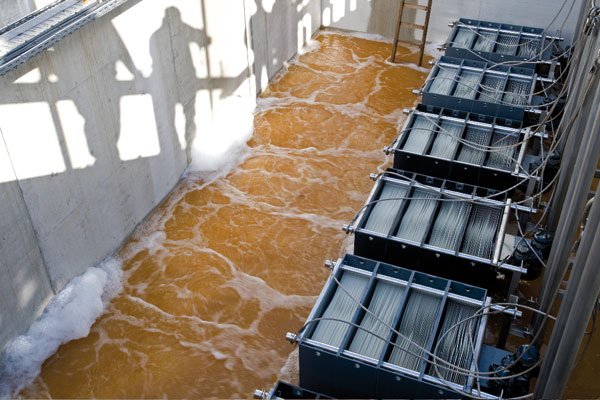
What Is Alum Used For In Wastewater Treatment

Understanding Alum and Its Role in Wastewater Treatment
Wastewater treatment is a crucial component of environmental management, ensuring that water is clean and safe for both human use and ecological health. Among the many chemicals and processes used in wastewater treatment, alum is a standout for its effectiveness and versatility. This article delves into what alum is, its applications, particularly in wastewater treatment, and the broader implications of its use.
What is Alum?
Alum refers to a group of chemical compounds that are hydrated double sulfates, typically composed of aluminum, potassium, and other metals. The most common form used in water treatment is aluminum sulfate (Al₂(SO₄)₃·nH₂O). It is a white, crystalline substance and is readily available in the market, often used in various industrial applications such as paper manufacturing, dyeing textiles, and more prominently, water purification.
Chemical Properties
Aluminum sulfate is soluble in water and, when dissolved, undergoes hydrolysis forming a range of charged species. This hydrolysis is crucial in destabilizing and aggregating suspended particles found in untreated water, making it an effective coagulant.
Types of Alum
While aluminum sulfate is predominantly used, other types of alum include potassium alum, sodium alum, and ammonium alum. However, in wastewater treatment, aluminum sulfate is the most widely used due to its optimal performance in treating a variety of water impurities.
The Role of Alum in Wastewater Treatment
The use of alum in wastewater treatment revolves around its ability to act as a coagulant. Coagulation is a chemical process in which small particles in the water aggregate to form larger particles, known as flocs, which can then be removed more easily by sedimentation and filtration. This section explores the processes involved in utilizing alum and its effectiveness in improving water quality.
Coagulation and Flocculation
-
- Coagulation: When alum is added to wastewater, it reacts with the water to form positively charged aluminum ions. These ions neutralize the negatively charged colloidal particles suspended in the water, such as clay, silt, organic matter, and other contaminants. This neutralization is the first step in coagulation and leads to particle destabilization.
-
- Flocculation: Following coagulation, the next step is flocculation, a slower and gentle stirring process that encourages the small, destabilized particles to come together to form larger aggregates or flocs. These flocs are easier to remove from the water, usually through sedimentation or filtration.
Advantages of Alum in Wastewater Treatment
-
- Cost-Effectiveness: Alum is widely available and relatively inexpensive compared to other coagulants, making it a popular choice for municipal and industrial wastewater treatment facilities.
-
- Efficiency: Alum is particularly effective in reducing turbidity and removing suspended solids, as well as phosphorus, from wastewater. Phosphorus removal is vital for preventing eutrophication in water bodies.
-
- pH Neutrality: Unlike some other chemical coagulants, alum does not significantly alter the pH of the water, which means less additional chemical treatment may be needed to maintain a neutral pH, reducing the overall cost and chemical use.
Application Process
-
- Preparation: Before its application, alum is often dissolved in water to create an alum solution. This solution is then added to the wastewater in controlled amounts.
-
- Mixing and Flocculation: After addition, rapid mixing ensures uniform distribution of the alum in the water, followed by slower mixing to allow smooth flocculation.
-
- Sedimentation: The flocs formed during flocculation are allowed to settle by gravity in a sedimentation tank, separating the aggregated particles from the clean water.
-
- Filtration: Any remaining flocs are removed through filtration, polishing the water before it undergoes further treatment or is discharged into the environment.
Challenges and Considerations
While alum is highly effective and economically favorable, its use comes with certain challenges and considerations that must be managed.
Sludge Production
One primary concern is the increased production of sludge, a by-product from the coagulation and flocculation process. This sludge requires proper disposal or treatment, which can add to operational costs. Engaging in strategies such as sludge recycling or finding industrial uses for sludge can mitigate these issues.
Environment and Health Concerns
There is ongoing research into the potential environmental impacts of aluminum residuals in treated water. Aluminum presence at high concentrations can be toxic to aquatic life and may have implications for human health if ingested. Ensuring optimal dosing and adhering to regulatory standards can minimize these risks.
Reaction with Natural Organic Matter (NOM)
The presence of NOM in water can influence alum’s coagulation performance. NOM can consume a large proportion of added alum, reducing its effectiveness and requiring higher dosages. Continued research and adaptation of processes are necessary to manage NOM effectively.
Alternative Coagulants and Future Perspectives
While alum is a staple in the wastewater treatment industry, ongoing developments in treatment technologies and materials are worth noting.
-
- Alternative Coagulants: Chemicals such as ferric chloride, and synthetic polymers, are explored for specific applications where alum may not perform adequately.
-
- Sustainable Practices: Emphasizing sustainability in water treatment, researchers are looking into biopolymers derived from natural resources as eco-friendly coagulants.
-
- Advanced Treatment Technologies: Techniques such as membrane filtration and advanced oxidation processes hold promise for reducing reliance on chemical coagulants.
Conclusion
Alum remains an indispensable part of wastewater treatment, providing an economical and efficient solution for the removal of turbidity, phosphorus, and other impurities. While challenges exist in terms of sludge generation and potential environmental impacts, careful management and continued innovation in the field can aid in optimizing its use.
As we move towards a future where clean water becomes even more critical, the role of treatment chemicals like alum—and their alternatives—will be central in devising efficient and sustainable water management strategies. Emphasizing research and development in this domain is imperative to enhance the efficacy and mitigate the challenges associated with the use of alum in wastewater treatment systems.

